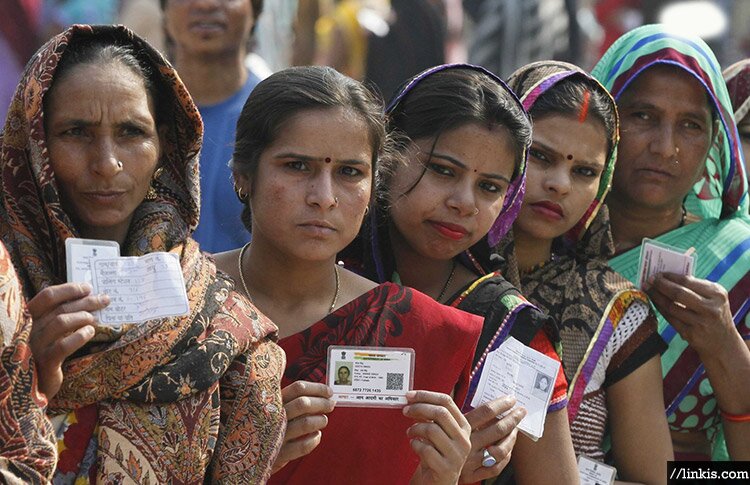Easy One-Number Strategy for your Budgeting
- JWB Post
- April 23, 2015
No one loves budgeting. That might be because your budget probably looks something like a Jeopardy! board: dozens of categories with individual numbers assigned to them.
Sometimes, though, going into that much detail doesn’t help you see the forest for the trees—and could feel a bit restricting for the less detail-oriented among us. What if we told you there may be a better way—an alternative that helps you know whether you’ve got room in your budget to splurge on dinner out, while still making sure you’re taking your financial goals into account?
It all starts with dividing your monthly take-home pay into four categories—fixed costs, financial goals, non-monthly expenses and flexible spending. Your flexible spending amount becomes your one, easy-to-follow number.
An Easier Way to Categorize Spending
Here are the four buckets of expenses within the One-Number Strategy.
1. Fixed costs. So what are fixed costs? These are the essential bills that don’t tend to change from month to month, like your mortgage or rent, as well as any regularly recurring payments, like subscription services.
Your fixed costs list may include:
• Housing
• Utilities
• Cell phone bill
• Gym membership
• Fixed transportation/commuting costs (like monthly public transportation)
• Child care
• etc.
2. Financial goals. Your goals can include anything from paying down student loans to saving up for a house down payment. There are three essential goals everyone should include in their budget to ensure a strong financial foundation: building an emergency fund, saving for retirement and paying down credit card debt.
Your financial goals may include:
• Paying down credit card debt
• Building an emergency fund
• Paying off student loans
• After-paycheck retirement contributions
• Saving for a big vacation
• Saving for a down payment on a house
3. Non-monthly expenses. This third category has traditionally created some financial blind spots because it includes expenses you’re generally committed to paying, but may forget about because they don’t pop up every month. Non-monthly expenses include payments you have to make, such as quarterly taxes or tuition, but it can also include “fun” spending like holiday gifts and haircuts.
Your non-monthly expenses may include:
• Quarterly taxes
• Auto registration fees
• Annual insurance premiums
• School tuition
• Holiday gifts
• Haircuts
• Wedding gifts
• Home maintenance
To help make sure you have money at the ready to cover these types of costs, it is generally recommended tallying up all your potential non-monthly expenses and then dividing that total by 12. This number is a monthly contribution you could place into a separate savings account specifically for non-monthly expenses to help spread out the burden of covering those costs. That way, when that next annual insurance premium, quarterly bill or destination wedding pops up, you should already have the cash set aside to pay for it.
4. Flexible spending. So what is flexible spending? This covers day-to-day lifestyle expenses that can vary from month to month, like groceries, concert tickets or happy hours with your co-workers. Groceries are included in flexible spending because even though food is a necessity in your budget, how you spend on food can vary—some weeks you might eat out more, while other weeks you may cook at home more.
Your flex spending is probably the most fun category of your budget because it’s the amount you can spend at your discretion. Planners often remind their clients that it doesn’t really matter what they spend on in this category each month—as long as they’re not going over their total flex spending amount.
Your flexible spending list may include:
• Groceries
• Lunches at work
• Eating out
• Personal care items
• Shopping
• Entertainment
• Variable transportation costs (like gas and cabs)
Getting to Your ‘One Number’
So where’s the “one number” in your One-Number Strategy? It lies in your flex spending, which you can figure out with some simple math.
It starts with paying yourself first. Take your monthly take-home pay, which is the amount that hits your bank account after taxes and retirement contributions, and subtract your monthly fixed expenses, financial goal contributions and the non-monthly savings contribution you’re setting aside. Now that you’ve accounted for your expenses and goals, what’s left over is your flexible spending amount. This is the “one number” that you get to spend however you’d like!
Let’s say you use more of your flex spending on concerts one month, so you decide to hold off on buying that fancy new tech toy. Or maybe you had friends in town, which doubled your usual restaurant spending, so you pared back on other entertainment costs as a trade-off. As long as you’ve stayed within your total flex-spending number, you’re still on budget.
And to make it even easier to stick to that one number, divide your monthly flex amount by 4.3 to give yourself a consistent weekly flex target. (Using 4.3 instead of four is preferable because it helps account for those months with five weeks.) Experts recommend using a weekly number because it can help you adjust better if you happen to spend more than usual one week. Otherwise, if you’re not mindful, you could find you’ve used up your flex spending by the third week of the month—and have nothing left to spend by week four.
Want a larger flex-spending number to work with? Then maybe you can downgrade your cell phone plan, negotiate a cheaper cable package or get rid of a subscription you don’t really use anymore. And remember that you can apply the cost savings to your flex spending, or you could put extra money toward some of your goals.
Setting Up a Two-Checking-Account Strategy
Now that you’ve simplified your spending categories, it’s time to figure out how to implement your new budget. The basis of keeping your spending organized within the One-Number Strategy is actually using two separate checking accounts: one labeled “fixed,” and the other labeled “flex.” Once you’ve figured out your fixed and flex target numbers, consider splitting the direct deposit from your paycheck between these two accounts.
Fixed checking. Your fixed checking is where you’ll keep the money to cover your fixed costs, financial-goal contributions and non-monthly expenses you’ve committed to saving for each month. It is recommended to automate your savings contributions and debt payments to help make sure you’re saving regularly—and that you don’t miss a payment!
Flex checking. Sticking to your one number should be easy, which is why we recommend you keep a separate checking account for your flex spending—and fund it through direct deposit from your paycheck.
If you’re unable to split up your direct deposits, another option is to set up a monthly or weekly transfer for your flex spending amount from your fixed to your flex checking account.
Just make sure to bake a small buffer into each account if possible so you’re never drawing down to zero. This will help prevent the possibility of an overdraft. And check to make sure whether any new accounts you open have a minimum balance or direct-deposit requirement—otherwise, you may be subject to fees.
Ways You Can Implement Your Cash Flow
So how might you manage the cash that comes from your flex checking account?
1. Debit only. Consider using the debit card from your flex checking account for every flex purchase—and only carry this card with you. (Your fixed debit card can stay at home, because you’re not accessing that money for your day-to-day costs.)
2. Cash only. If cash feels more “real” to you when it comes to spending, then you may opt instead to withdraw cash from your flex account, rather than paying for purchases by debit. With this strategy, you may want to visit the ATM each Friday and withdraw the amount of your weekly flex spending—then make it last the whole week. This can make it hard to go over budget, because by the end of the week, your wallet will literally be empty.
3. Credit only. If you can’t bear the idea of losing out on credit card rewards (and by extension, that dream vacation you may be able to pay for with loyalty points), this system could be for you. Consider charging all of your flex purchases on the same card, and monitor your balance every week. You may even be able to use mobile app or automated alerts to let you know when your charges are in danger of exceeding your weekly flex-spend number. And rather than pay your balance off monthly, consider paying off your balance every week—say, every Friday—to ensure that you won’t accidentally overspend your flex budget.
Experts caution that the credit-only system should only be an option if you have no credit card debt and you consistently pay your balance in full every single month. Otherwise, if paying down credit card debt is one of your financial goals, you should stop using your cards until they are paid off.
Remember the Big Picture
The goal of the One-Number Strategy is to provide a more flexible framework for how to manage and think about your money. The beauty of a pared-down budget is that you have a much clearer idea of what your spending should be every month, and you can relax and know that you are on track if you stay within your target number.
This article originally appeared on learnvest.com and was posted here with few adaptations.
- 0
- 0

Leave A Comment
See Previous Projects
MAKE-OVER PROJECT ▼
Current Discussion
-
Do You Think Reservation For Women Should Be Mandatory In Paramilitary Forces?
Discuss
-
Are E-CBSE Textbooks Better Than Carrying The Burden Of Bags Around?
Discuss
Popular Post
-
Education
Jaipur's Book-Nook Helps Kids Develop Reading Habit Through Story-telling
-
Health
50 Body Acceptance New Year Resolutions (That Don't Involve Dieting!)





